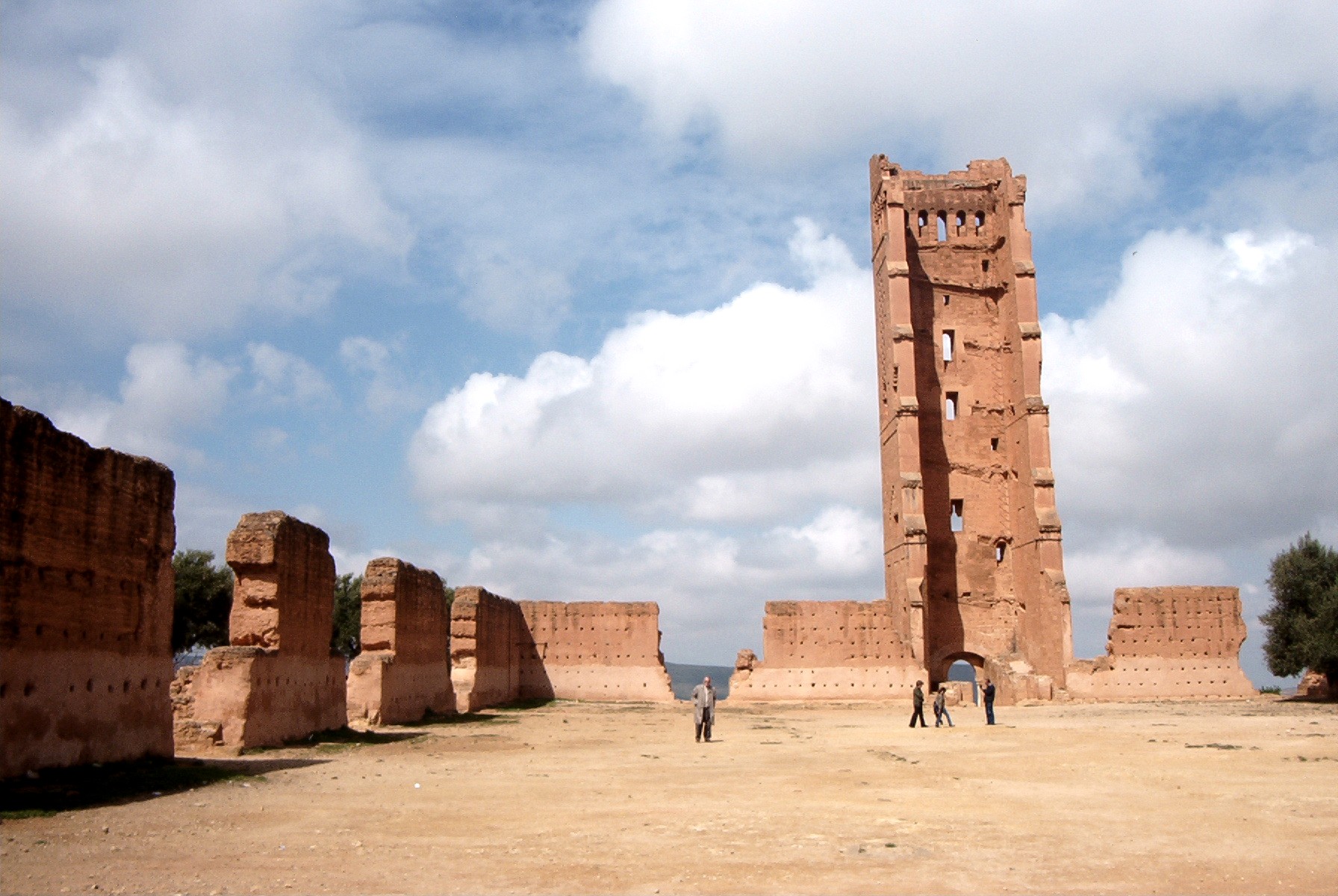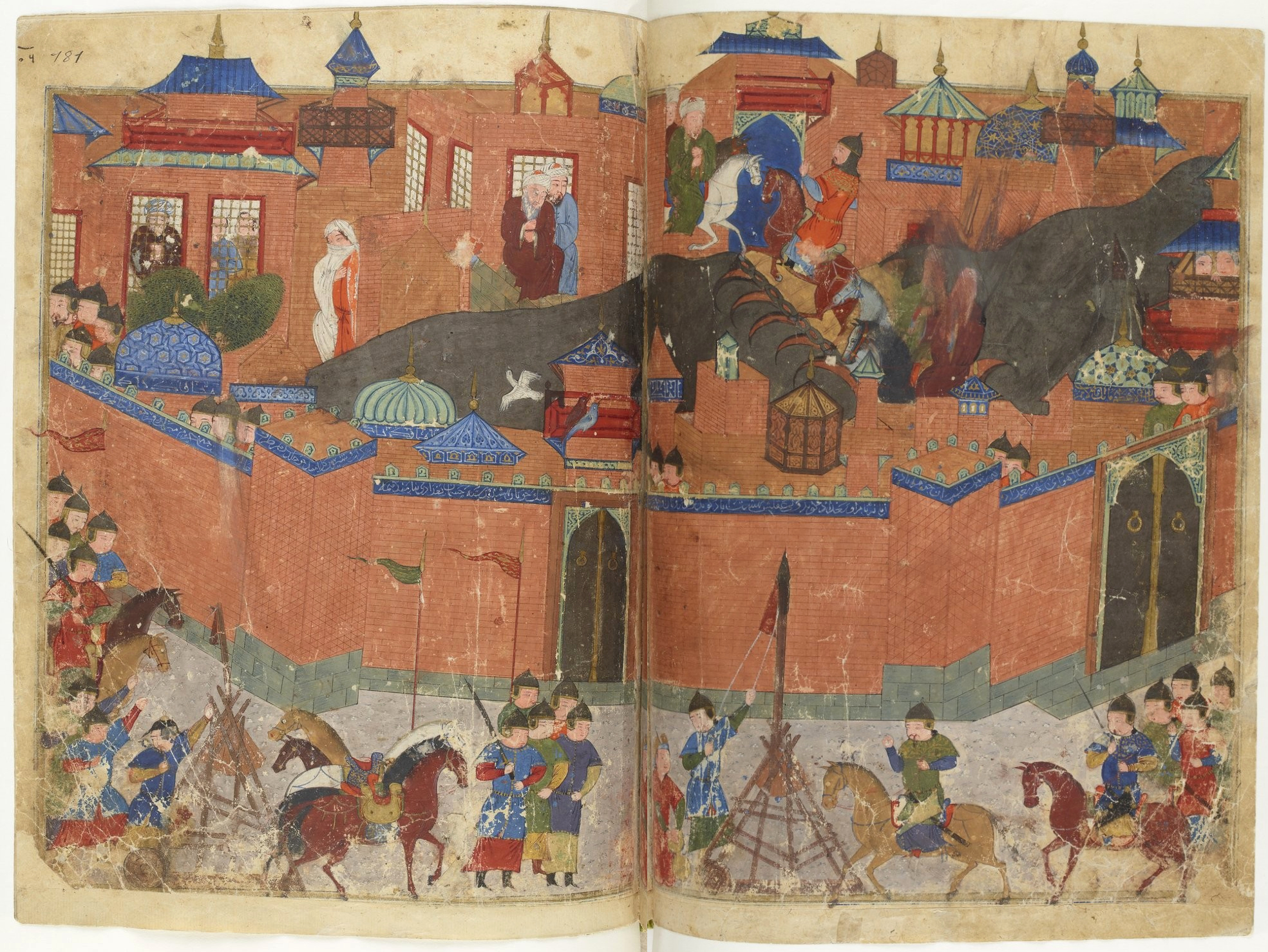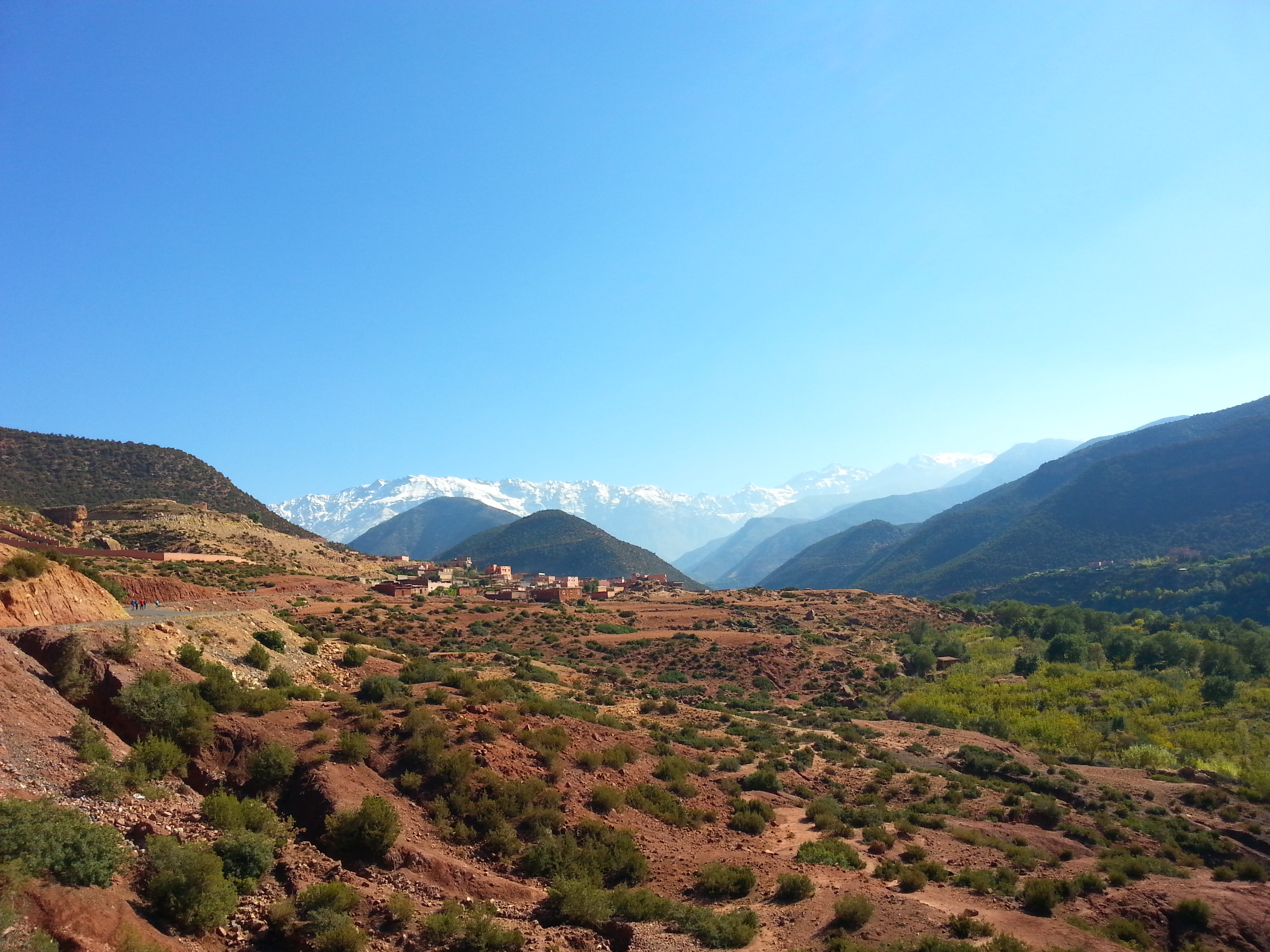|
Abu Yahya Ibn Abd Al-Haqq
Abu Yahya Abu Bakr ibn Abd al-Haqq () (died 1258) was a Marinid ruler from 1244 to 1258. Life Abu Yahya was the son of Abd al-Haqq I and the brother of both Uthman I and Muhammad I. When he ascended the throne in 1244, Abu Yahya shared control of Morocco with the various Marinid clans then grouped together in the east of Upper Moulouya. He captured the territory of Meknes which became the first Marinid capital, but the Almohad Abu al-Hasan as-Said led an offensive against him. Therefore Abu Yahya retreated to eastern Morocco. Abu al-Hasan as-Said then took the opportunity to attack Yaghmurasen Ibn Zyan, founder of the kingdom of Tlemcen, but in 1248 he was killed and Abu Yahya wiped out what remained of the Almohad army in Guercif. Abu Yahya was now in control of all of eastern Morocco. Abu Yahya captured Fez in 1248 and reached the ocean. The fight against the Almohads continued for many years. By the time Abu Yahya died of illness in 1258, the Almohads only contr ... [...More Info...] [...Related Items...] OR: [Wikipedia] [Google] [Baidu] |
Marinid Sultanate
The Marinid dynasty ( ) was a Berbers, Berber Muslim dynasty that controlled present-day Morocco from the mid-13th to the 15th century and intermittently controlled other parts of North Africa (Algeria and Tunisia) and of the southern Iberian Peninsula (Spain) around Gibraltar. It was named after the Banu Marin (, Berber languages, Berber: ''Ayt Mrin''), a Zenata, Zenata Berber tribe. It ruled the Marinid sultanate, founded by Abd al-Haqq I.C.E. Bosworth, ''The New Islamic Dynasties'', (Columbia University Press, 1996), 41-42. In 1244, after being at their service for several years, the Marinids overthrew the Almohad Caliphate, Almohads which had controlled Morocco. At the height of their power in the mid-14th century, during the reigns of Abu al-Hasan Ali ibn Othman, Abu al-Hasan and his son Abu Inan Faris, Abu Inan, the Marinid dynasty briefly held sway over most of the Maghreb including large parts of modern-day Algeria and Tunisia. The Marinids supported the Emirate of Grana ... [...More Info...] [...Related Items...] OR: [Wikipedia] [Google] [Baidu] |
Guercif
Guercif (Arabic: ڭرسيف) is a town and municipality in Guercif Province, Oriental, Morocco. It is the province's capital. According to the 2014 census the municipality had a population of 90,880 people living in 18,779 households. Nearby cities In the north of the city of Guercif we find the province of Nador, 135 km away, and a distance of 170 km south of the city, we find the city of Mysore on the national road No.15. As for if we go to the west and 65 km away we find the city of Taza. In the east of the city, we find the city of Taourirt, 54 km. Economy The city of Guercif depends mainly on its economy on the agricultural sector, as it is considered one of the largest cities in Morocco that produce olives. The city is famous for holding an annual festival called the Olive Festival, and its timing coincides with the city's olive harvest season. In addition to the agricultural sector, trade in the province of Guercif is an essential activity besides a ... [...More Info...] [...Related Items...] OR: [Wikipedia] [Google] [Baidu] |
13th-century Moroccan People
The 13th century was the century which lasted from January 1, 1201 (represented by the Roman numerals MCCI) through December 31, 1300 (MCCC) in accordance with the Julian calendar. The Mongol Empire was founded by Genghis Khan, which stretched from Eastern Asia to Eastern Europe. The conquests of Hulagu Khan and other Mongol invasions changed the course of the Muslim world, most notably the Siege of Baghdad (1258) and the destruction of the House of Wisdom. Other Muslim powers such as the Mali Empire and Delhi Sultanate conquered large parts of West Africa and the Indian subcontinent, while Buddhism witnessed a decline through the conquest led by Bakhtiyar Khilji. The earliest Islamic states in Southeast Asia formed during this century, most notably Samudera Pasai. The Kingdoms of Sukhothai and Hanthawaddy would emerge and go on to dominate their surrounding territories. Europe entered the apex of the High Middle Ages, characterized by rapid legal, cultural, and religious e ... [...More Info...] [...Related Items...] OR: [Wikipedia] [Google] [Baidu] |
1258 Deaths
Year 1258 ( MCCLVIII) was a common year starting on Tuesday of the Julian calendar. Events By place Mongol Empire * February 10 – Siege of Baghdad: Mongol forces (some 150,000 men), led by Hulagu Khan, besiege and conquer Baghdad after a siege of 13 days. During the first week of February, the eastern walls begin to collapse, and the Mongols swarm into the city, on February 10. Caliph Al-Musta'sim surrenders himself to Hulagu – together with all the Abbasid chief officers and officials. They are ordered to lay down their arms, and are massacred. Hulagu imprisons Al-Musta'sim among his treasures, to starve him to death. Meanwhile, massacres continue throughout the whole city; in 40 days about 80,000 citizens are murdered. The only survivors are the ones who are hiding in cellars which are not discovered, and a number of attractive girls and boys who are kept to be slaves, and the Christian community, who take refuge in the churches which are left undisturbed, ... [...More Info...] [...Related Items...] OR: [Wikipedia] [Google] [Baidu] |
Marinid Dynasty
The Marinid dynasty ( ) was a Berbers, Berber Muslim dynasty that controlled present-day Morocco from the mid-13th to the 15th century and intermittently controlled other parts of North Africa (Algeria and Tunisia) and of the southern Iberian Peninsula (Spain) around Gibraltar. It was named after the Banu Marin (, Berber languages, Berber: ''Ayt Mrin''), a Zenata, Zenata Berber tribe. It ruled the Marinid sultanate, founded by Abd al-Haqq I.C.E. Bosworth, ''The New Islamic Dynasties'', (Columbia University Press, 1996), 41-42. In 1244, after being at their service for several years, the Marinids overthrew the Almohad Caliphate, Almohads which had controlled Morocco. At the height of their power in the mid-14th century, during the reigns of Abu al-Hasan Ali ibn Othman, Abu al-Hasan and his son Abu Inan Faris, Abu Inan, the Marinid dynasty briefly held sway over most of the Maghreb including large parts of modern-day Algeria and Tunisia. The Marinids supported the Emirate of Grana ... [...More Info...] [...Related Items...] OR: [Wikipedia] [Google] [Baidu] |
Oum Er-Rbia River
Oum Er-Rbia () is a large, long and high-throughput river in central Morocco. The river is long. With an average water throughput of 105 m3/s, Oum Er-Rbia is the second-largest river in Morocco after the Sebou River. It originates in the Middle Atlas and passes through the city of Khénifra, arriving at its mouth at the Atlantic Ocean at the port of Azemmour, located on its left bank. Oum Er-Rbia has six dams, the most important of which is Al Massira Dam. Its most important tributaries A tributary, or an ''affluent'', is a stream or river that flows into a larger stream ('' main stem'' or ''"parent"''), river, or a lake. A tributary does not flow directly into a sea or ocean. Tributaries, and the main stem river into which the ... are the El-Abid River, the Tessaoute River, and the Lakhdar River. According to scholars, the original Berber common name of the river is Wansifen and was only changed recently, circa 16th or 17th century, and a nearby village called O ... [...More Info...] [...Related Items...] OR: [Wikipedia] [Google] [Baidu] |
Marrakesh
Marrakesh or Marrakech (; , ) is the fourth-largest city in Morocco. It is one of the four imperial cities of Morocco and is the capital of the Marrakesh–Safi Regions of Morocco, region. The city lies west of the foothills of the Atlas Mountains. The city was founded circa 1070 by Abu Bakr ibn Umar as the capital of the Almoravid dynasty. The Almoravids established the first major structures in the city and shaped its layout for centuries to come. The red Walls of Marrakesh, walls of the city, built by Ali ibn Yusuf in 1122–1123, and various buildings constructed in red sandstone afterwards, have given the city the nickname of the "Red City" or "Ochre City". Marrakesh grew rapidly and established itself as a cultural, religious, and trading center for the Maghreb. After a period of decline, Marrakesh regained its status in the early 16th century as the capital of the Saadian dynasty, with sultans Abdallah al-Ghalib and Ahmad al-Mansur embellishing the city with an array of s ... [...More Info...] [...Related Items...] OR: [Wikipedia] [Google] [Baidu] |
Sous
The Sous region (also spelt Sus, Suss, Souss or Sousse) (, ) is a historical, cultural and geographical region of Morocco, which constitutes part of the region administration of Souss-Massa and Guelmim-Oued Noun. The region is known for the endemic argan tree (which has become a symbol of Souss) as well as for being the capital of the Shilha Berber ethnic group. It is a major commercial and tourist agricultural region of Morocco. Vegetable production, shared between very large farms and small producers, contributes to the economic development of the region. The Souss plain produces 40% of Moroccan citrus ''Citrus'' is a genus of flowering trees and shrubs in the family Rutaceae. Plants in the genus produce citrus fruits, including important crops such as oranges, mandarins, lemons, grapefruits, pomelos, and limes. ''Citrus'' is nativ ... fruits, and 60% of the production of early vegetables. It is historically a stage of trans-Saharan trade. History Medieva ... [...More Info...] [...Related Items...] OR: [Wikipedia] [Google] [Baidu] |
High Atlas
The High Atlas, also called the Grand Atlas, is a mountain range in central Morocco, North Africa, the highest part of the Atlas Mountains. The High Atlas rises in the west at the Atlantic Ocean and stretches in an eastern direction to the Moroccan-Algerian border. At the Atlantic and to the southwest the range drops abruptly and makes an impressive transition to the coast and the Anti-Atlas range. To the north, in the direction of Marrakech, the range descends less abruptly. The range includes Jbel Toubkal, which at is the highest in the range and lies in Toubkal National Park. The range serves as a weather system barrier in Morocco running east–west and separating the Sahara from the Mediterranean and continental zones to the north and west. In the higher elevations of the massif, snow falls regularly, allowing winter sports. Snow lasts well into late spring in the High Atlas, mostly on the northern faces of the range. On the Western High Atlas, there is Oukaïmeden, o ... [...More Info...] [...Related Items...] OR: [Wikipedia] [Google] [Baidu] |
Fez, Morocco
Fez () or Fes (; ) is a city in northern inland Morocco and the capital of the Fez-Meknes, Fez-Meknes administrative region. It is one of the List of cities in Morocco, largest cities in Morocco, with a population of 1.256 million, according to the 2024 Moroccan census, census. Located to the northwest of the Atlas Mountains, it is surrounded by hills and the old city is centered around the Oued Fes, Fez River (''Oued Fes'') flowing from west to east. Fez has been called the "Mecca of the West" and the "Athens of Africa". It is also considered the spiritual and cultural capital of Morocco. Founded under Idrisid dynasty, Idrisid rule during the 8th century Common Era, CE, Fez initially consisted of two autonomous and competing settlements. Successive waves of mainly Arab immigrants from Ifriqiya (Tunisia) and al-Andalus (Spain/Portugal) in the early 9th century gave the nascent city its Arab character. After the downfall of the Idrisid dynasty, other empires came and went until t ... [...More Info...] [...Related Items...] OR: [Wikipedia] [Google] [Baidu] |





